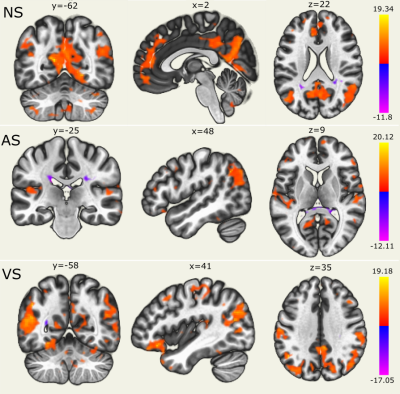Anissa L. Ramadhani1,2, Ali-Reza Mohammadi-Nejad1,2,3, Katrin Krumbholz2,4, and Dorothee Auer1,2,3
1Radiological Sciences, DCN, School of Medicine, University of Nottingham, Nottingham, United Kingdom, 2SPMIC, School of Medicine, University of Nottingham, Nottingham, United Kingdom, 3National Institute for Health Research (NIHR), Nottingham BRC, Queens Medical Ctr, Nottingham, United Kingdom, 4Hearing Sciences, DCN, School of Medicine, University of Nottingham, Nottingham, United Kingdom
1Radiological Sciences, DCN, School of Medicine, University of Nottingham, Nottingham, United Kingdom, 2SPMIC, School of Medicine, University of Nottingham, Nottingham, United Kingdom, 3National Institute for Health Research (NIHR), Nottingham BRC, Queens Medical Ctr, Nottingham, United Kingdom, 4Hearing Sciences, DCN, School of Medicine, University of Nottingham, Nottingham, United Kingdom
We investigate if brain coherence reduction is a modality-specific effect, by comparing BOLD signal during rest and a continuous auditory or visual task. Our results suggest that task-induced reduction in brain coherence occurs only in default-mode and hetero-modal brain regions.

Figure 2. A) Coronal section of the human brain showing
the representative Broadmann areas studied. B) Pairwise connectivity
in ROI-to-ROI FC during rest. Strongest FC is shown in dark red. C) Mean z score (±SEM) showing FC in five
strongest connections from panel (B), between BA 41 and 42, between BA 42 and
22, and between left and right hemisphere of BA 41, 42 and 22, during rest and
each task condition. BA: Brodmann area. BA 41/42/22: primary/secondary/tertiary
auditory cortex. NS/AS/VS: no task/acoustic task/visual task.

Figure 1. Global correlation maps represent a measure the connectedness
of each voxel, characterized by the strength and sign of connectivity between a
given voxel and the rest of the brain. The DMN was identified during
resting-state (NS), while during task-state (AS and VS) DMN appeared to be
reduced. Language network and dorsal-visual network were identified during AS
and VS, respectively. Maps were thresholded at a voxel threshold of p <
0.001 (uncorrected) and a cluster threshold of p < 0.05 (FDR corrected).
DMN: Default Mode Network. NS/AS/VS: no task/acoustic task/visual task.
